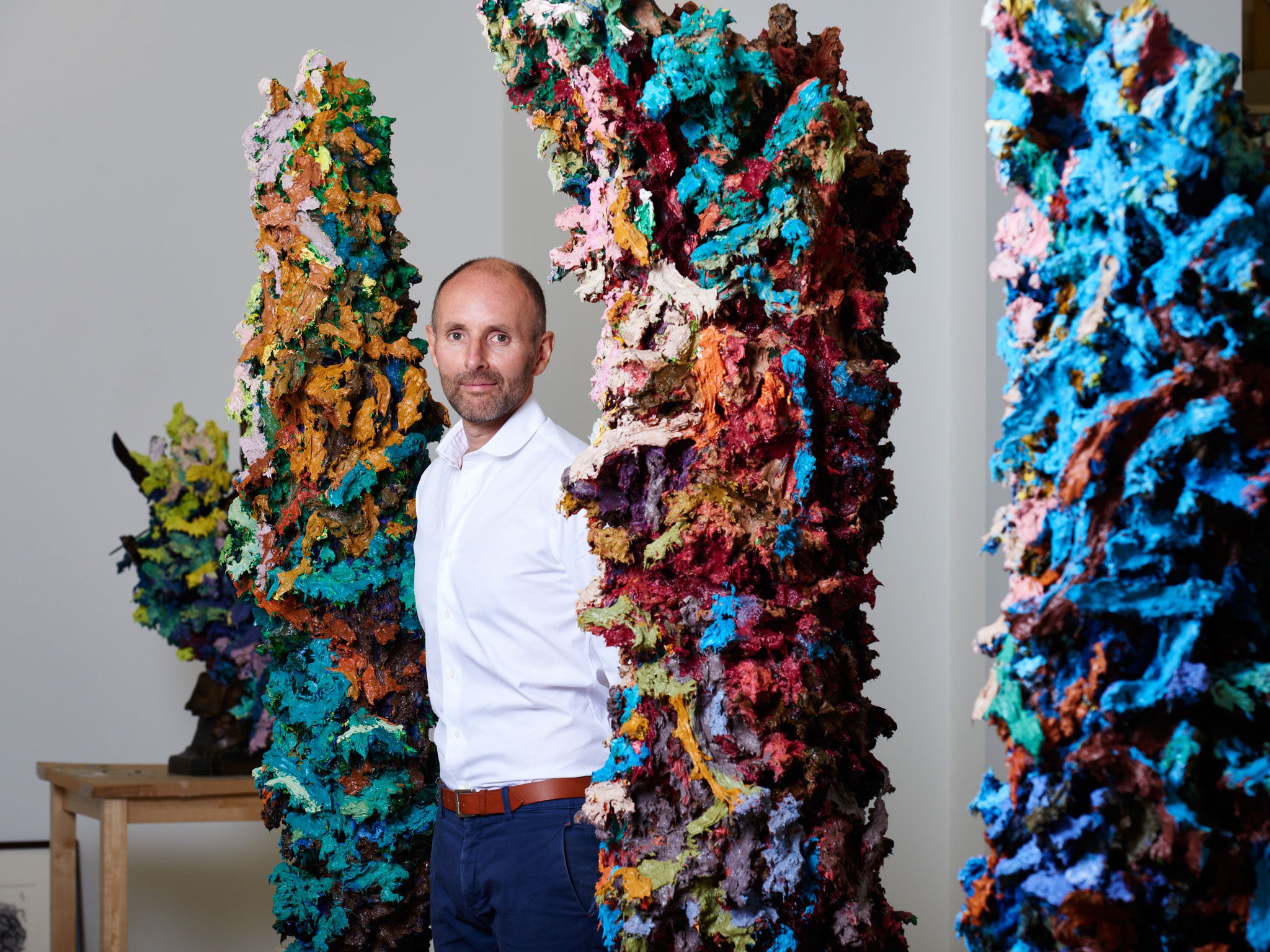Glenn Brown, painter and sculptor: 'Sculpture has to operate in its own right - it cannot be slavish to its sources'
Karen Wright visits the artist in his studio near Old Street roundabout

Glenn Brown has been in his studio near Old Street roundabout in east London for five years. A large modern space with top lighting, it is filled with signs of industriousness. In the hallway are armatures for the new sculptures he is working on and a suite of soon-to-be-shown drawings are ranged on the wall.
Until a few years ago, Brown focused almost entirely on painting, but after his show at Gagosian in New York in 2014, he started to examine drawing. It was something he had wanted to do for a while, but he had previously only made drawings as notes for correcting something on his paintings.
Brown, born in Hexham, Northumberland, in 1966, is such a successful artist – his paintings consistently sell for well over the million-dollar mark – it is impressive that he has the courage to change his practice. He was nominated for a Turner Prize in 2000 among YBAs more famous for unmade beds and blood heads. It all seems far away from here as the softly spoken Brown talks me through the journey he has taken away from painting to drawing and probably back to painting again.
It is, however, the sculpture, a suite of three sentinel-shaped lumps of colourful paint resembling feet, which keeps commanding my attention. It may be loosely based on the work of the German artist Georg Baselitz, but "there is a lot of artistic license", says Brown. "Sculpture has to operate in its own right – it can not be slavish to its sources." He explains his fascination with sculpture by saying "my pictures have sheer surfaces like glass, and I wanted to see through the picture plane and pop out the other side".
He points at a curling loop of paint, seemingly effortlessly floating in space. "I am trying different things. I was thinking of Lichtenstein's big brush stroke. A single brush stroke flying in the air." Brown may take his subject matter for his sculptures from thinking about one artist but he often takes his colour palette from another.
The mash-up creates a unique image, although, Brown says, "it is nice to have a starting point". Like his sculptures, his drawings often contain more than one source. He has also been experimenting with papers and pens, pointing out how different the drawings look on various coloured materials.
He takes me downstairs to another group of drawings. I point out how the more recent ones seem freer, looser and more painterly. "Yes, it is leading me back to painting," agrees Brown. "But the painting will be different. I cannot get back to the painting from before."
Glenn Brown: Dessins, Galerie Max Hetzler, Paris (www.maxhetzler.com) today to 10 October
Join our commenting forum
Join thought-provoking conversations, follow other Independent readers and see their replies
Comments
Bookmark popover
Removed from bookmarks